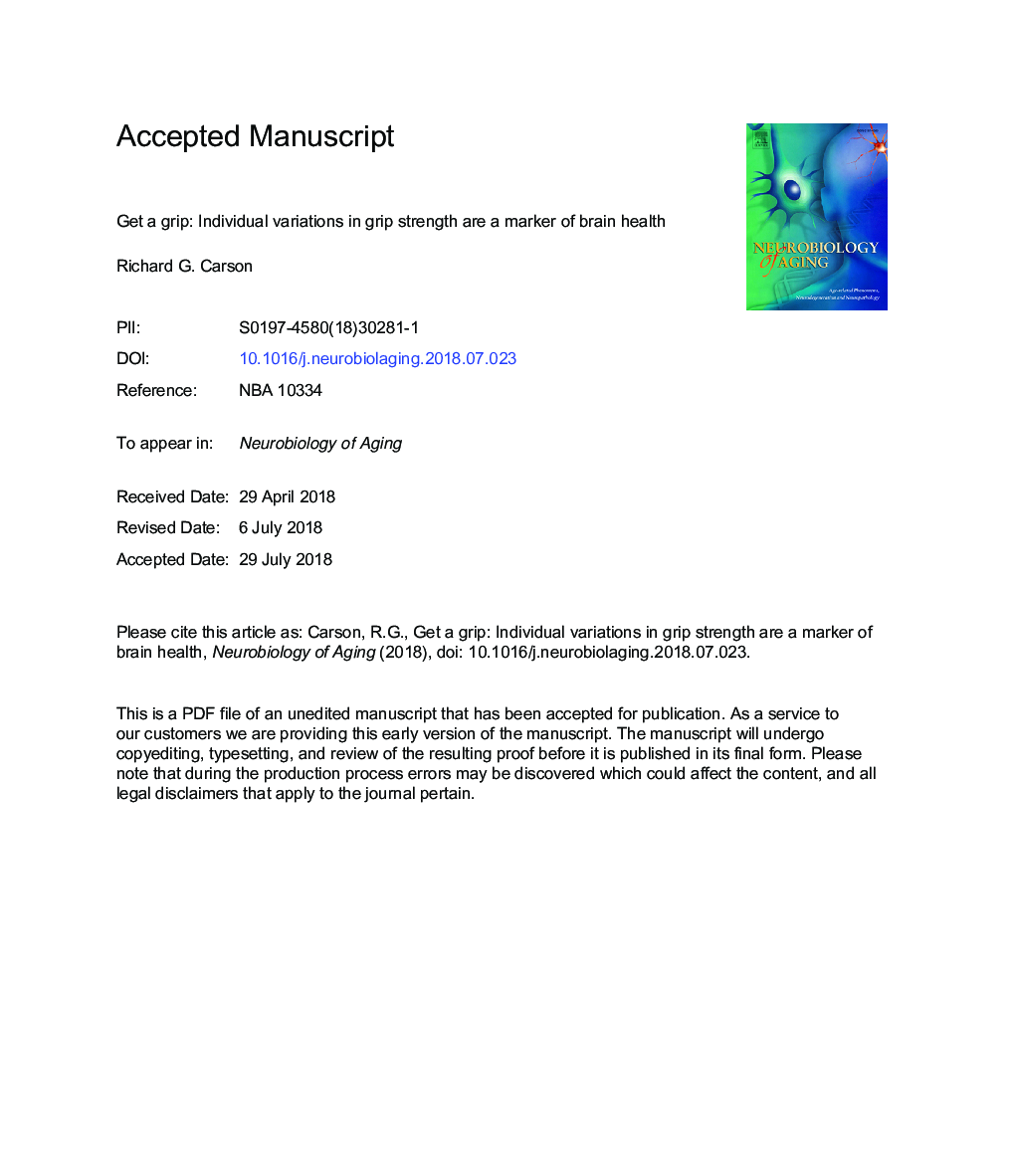| Article ID | Journal | Published Year | Pages | File Type |
|---|---|---|---|---|
| 11002002 | Neurobiology of Aging | 2018 | 93 Pages |
Abstract
Demonstrations that grip strength has predictive power in relation to a range of health conditions-even when these are assessed decades later-has motivated claims that hand-grip dynamometry has the potential to serve as a “vital sign” for middle-aged and older adults. Central to this belief has been the assumption that grip strength is a simple measure of physical performance that provides a marker of muscle status in general, and sarcopenia in particular. It is now evident that while differences in grip strength between individuals are influenced by musculoskeletal factors, “lifespan” changes in grip strength within individuals are exquisitely sensitive to integrity of neural systems that mediate the control of coordinated movement. The close and pervasive relationships between age-related declines in maximum grip strength and expressions of cognitive dysfunction can therefore be understood in terms of the convergent functional and structural mediation of cognitive and motor processes by the human brain. In the context of aging, maximum grip strength is a discriminating measure of neurological function and brain health.
Related Topics
Life Sciences
Biochemistry, Genetics and Molecular Biology
Ageing
Authors
Richard G. Carson,
